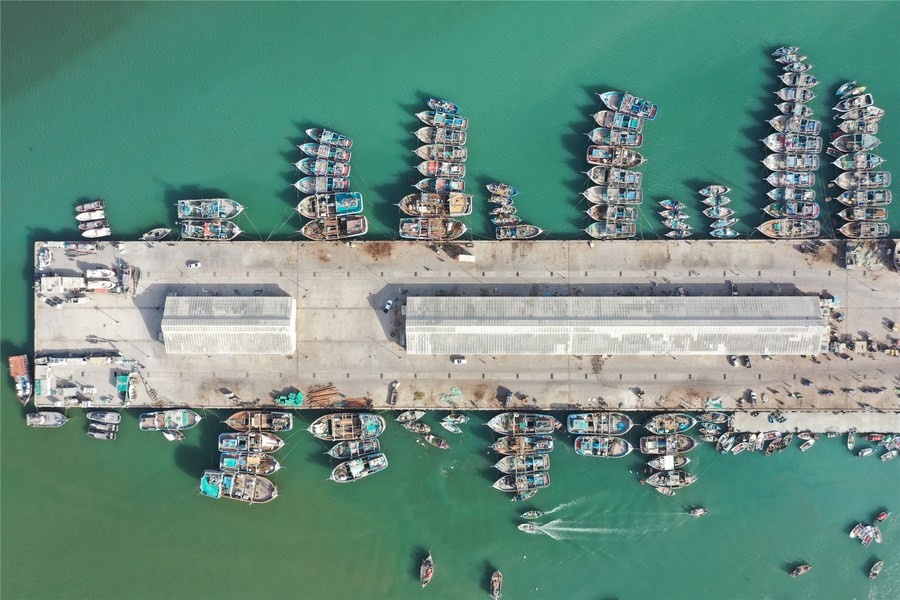By Imran Khalid
Anticipations were high for Chinese President Xi Jinping to unveil an ambitious blueprint for expanding and elevating the Belt and Road Initiative's (BRI) scope and qualitative facets at the tenth-anniversary event. Indeed, those expectations were met when he delivered his keynote address at the third Belt and Road Forum for International Cooperation, presenting a compelling vision for the BRI's future.
He outlined eight crucial measures aimed at bolstering and fortifying high-quality BRI collaboration. These measures truly reflect the Chinese leadership's comprehensive strategy to elevate the BRI to new heights, both in terms of quality and quantity, through this innovative blueprint, which covers almost all the crucial aspects. These eight measures represent a holistic approach to Belt and Road cooperation, emphasizing sustainability, inclusivity, and ethical conduct.
China's dedication to openness, green development, and technological innovation underscores its commitment to creating a prosperous future for BRI partner countries and the global community. It was truly encouraging to see that the China-Pakistan Economic Corridor (CPEC), the flagship project of the BRI, remained a focal point of discussions during the forum.
In 2013, the CPEC marked the beginning of an exciting journey, where China and Pakistan joined hands to pursue mutual prosperity, bolster connectivity and cultivate enduring camaraderie. China breathed new life into Pakistan's infrastructure, energy, and production sectors, extending a much-needed helping hand at a time when traditional international benefactors hesitated to bolster Pakistan's economic prospects.
Widely perceived as a catalyst for change, the CPEC has unleashed a profound transformation within Pakistan's economic landscape. By the end of 2022, the CPEC has brought a staggering $25.4 billion in direct investment to Pakistan, including areas like transportation, energy, and infrastructure. These investments are a crucial part of the broader Belt and Road Initiative. The CPEC presents a vast network of roadways that interweaves the rural and urban landscapes.
The strategic placement of nine Special Economic Zones (SEZs) along these crucial road links is a strategic masterstroke, acting as a powerful magnet for substantial investments in Pakistan. At the end of the first phase, it is worth noting that four of the nine designated SEZs within the CPEC are on the cusp of operational status. Meanwhile, the remaining quintet of SEZs is projected to achieve full functionality by the year 2030. This timeline highlights the profound transformative potential ingrained within this ambitious undertaking, offering the prospect of fundamentally reshaping the economic terrain.
The focus on energy projects is another salient feature of the CPEC, which encompasses a diverse array of coal, hydro, solar, and wind power plants, thereby substantially bolstering power generation capacity. This comprehensive approach has significantly augmented Pakistan's power generation capacity. Beyond merely addressing immediate energy needs, this visionary initiative has laid the groundwork for a more sustainable and environmentally friendly future. Pakistan's transition into an energy-surplus nation through the CPEC has ushered in a new era of industrial growth, captivating foreign investors who are increasingly drawn to these opportunities.

A port for fishermen in Gwadar of Pakistan's southwest Balochistan Province, Pakistan, June 4, 2022. [Photo/Xinhua]
The CPEC has made a particularly noteworthy contribution to Pakistan's burgeoning blue economy. A cornerstone of this ambitious vision, the Gwadar port, has undergone a remarkable transformation, evolving into a fully operational maritime hub that now facilitates global trade and commerce for Pakistan. With the Gwadar port poised to reach its full operational capacity, the potential for tangible economic growth for both nations is increasingly evident.
Initially conceived as a grand project linking Gwadar Port in southwestern Pakistan with China's northwestern Xinjiang region, the CPEC has since evolved into a multifaceted initiative, encompassing energy, infrastructure development, industrial cooperation, and the elevation of Gwadar into a pivotal trade hub. As nine Special Economic Zones (SEZs) advance, notably the flourishing Gwadar Free Economic Zone, the CPEC is progressively emerging as the premier "investment hub" in the region.
Furthermore, enhanced transportation networks, such as the Karakoram Highway and the Peshawar-Karachi Motorway, have played a major role in expediting travel and enabling the seamless flow of both goods and people. Its impact extends far beyond national borders, fostering regional integration and trade, while serving as a vital linchpin in the broader BRI. Through enhanced connectivity, the CPEC strengthens the connectivity between China, Pakistan and their neighboring nations, promoting regional cooperation and economic vitality. The CPEC transcends mere connectivity, emerging as an emblem of a lasting partnership that unlocks the expansive potential for mutual prosperity and advancement.
As both nations set sail into the next phase of CPEC, it offers the promise of igniting investment, progress, and prosperity not only for Pakistan but for the entire region. This next phase prioritizes high-quality development, envisioning a growth corridor complete with fully operational special economic zones, robust industrial and sustainable green corridors, and an enhanced commitment to openness and connectivity. It represents a significant step towards a future characterized by shared development and shared prosperity.
Imran Khalid, a special commentator on current affairs for CGTN, is a freelance columnist on international affairs.

 中文
中文



